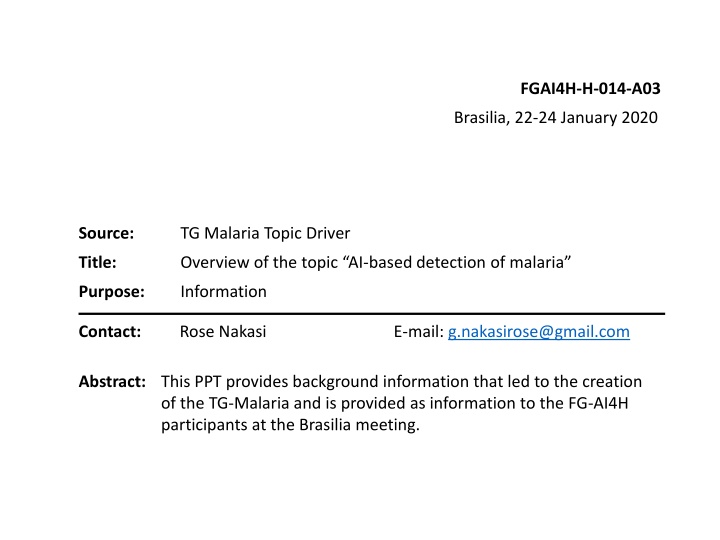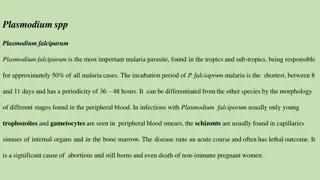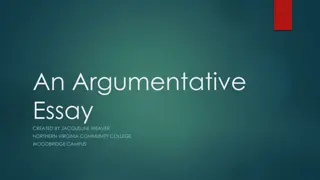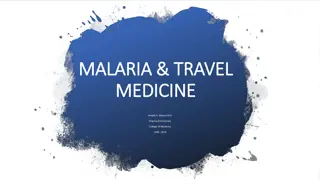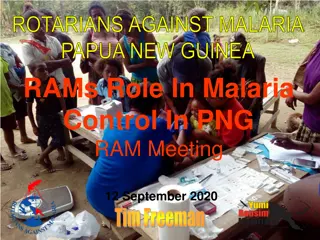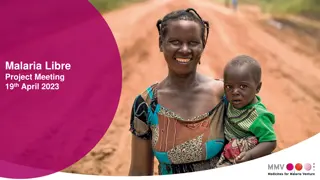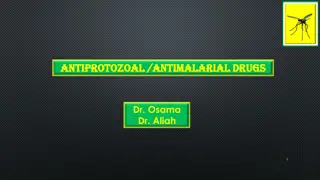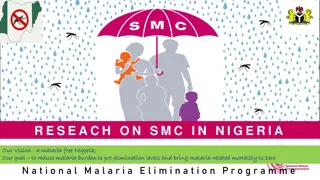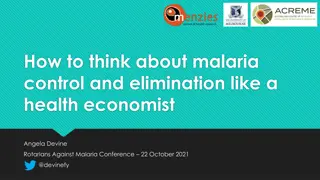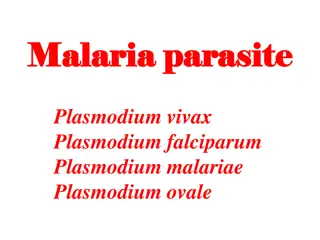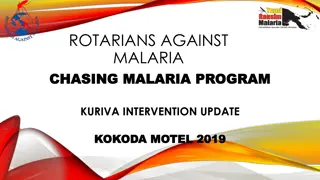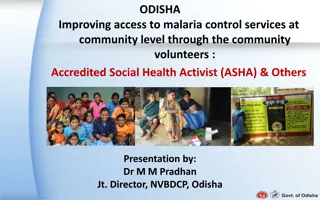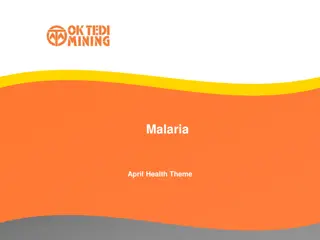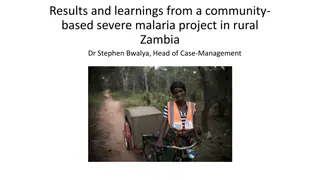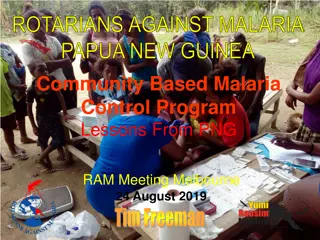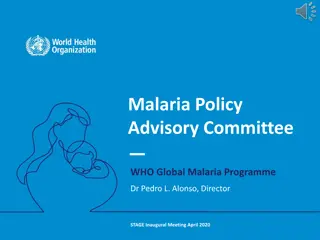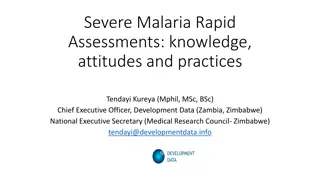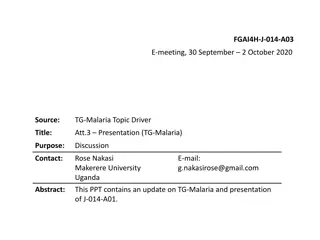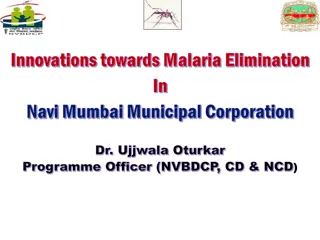AI-based Detection of Malaria: Overview and Challenges
This presentation delves into the utilization of AI for malaria detection, showcasing the background that led to the creation of TG-Malaria. Highlighting the current burden of malaria in Uganda and other developing nations, it addresses challenges in microscopy diagnosis due to a lack of trained technicians. The slides depict the need for innovative solutions, such as image capture and expert annotation for binary classification tasks. Emphasizing the significance of AI in enhancing diagnostic processes, the presentation sheds light on the potential to revolutionize malaria diagnosis in resource-constrained settings.
Download Presentation

Please find below an Image/Link to download the presentation.
The content on the website is provided AS IS for your information and personal use only. It may not be sold, licensed, or shared on other websites without obtaining consent from the author.If you encounter any issues during the download, it is possible that the publisher has removed the file from their server.
You are allowed to download the files provided on this website for personal or commercial use, subject to the condition that they are used lawfully. All files are the property of their respective owners.
The content on the website is provided AS IS for your information and personal use only. It may not be sold, licensed, or shared on other websites without obtaining consent from the author.
E N D
Presentation Transcript
FGAI4H-H-014-A03 Brasilia, 22-24 January 2020 Source: TG Malaria Topic Driver Title: Overview of the topic AI-based detection of malaria Purpose: Information Contact: Rose Nakasi E-mail: g.nakasirose@gmail.com Abstract: This PPT provides background information that led to the creation of the TG-Malaria and is provided as information to the FG-AI4H participants at the Brasilia meeting.
Microscopy Diagnosis Gold standard for diagnosis of malaria is a microscope 2
Malaria burden Currently in Uganda, and many developing countries Malaria has been reported as one of the leading cause of death accounting for over 27\% of lives of Ugandans Patient in big numbers wait to be diagnosed 3
Microscopy challenge In highly malaria endemic countries; There is lack of enough trained lab technicians In Ghana, 1.72 microscopes per 100,000 population, but only 0.85 trained laboratory staff per 100,000 population 4
Microscopy challenge Standard Operating Procedure requires not to view more than 20 slides a day Microscopy is eye straining Less diagnosis throughput Variations in individual expert judgment 5
Captured image 1182 images captured by smart phone and 2703 captured by Motic camera. The blue bounding box drawn around a pathogen Thick blood smear microscopic image captured with a smartphone 9
Captured image Image Annotation by experts-Binary classification task Expert annotation process 10
Binary classification Malaria Positive patches are annotated by drawing bounding boxes around the pathogens in (1182 images captured by smart phone and 2703 captured by motic camera) Positive patches labelled as "malaria"--TP Negative patches: anything in the image not labelled as malaria--TN Used PASCAL VOC format here for annotation as a benchmark 11
AI APPROACH-Supervised Machine Learning Approaches for benchmark; Traditional machine learning(with feature engineering)-Extra Random Tree Deep learning approach-Convolutional Neural Network 12
Bench mark deep learning architecture-CNN AI approach using CNN architecture https://www.sciencedirect.com/topics/engineering/convolutional-neural-networks 13
Plasmodium patch detection accuracies Positive and negative pathogen CNN accuracies Patch detection accuracies 14
ROC AUC for malaria, TB and intestinal parasites detection Deep learning accuracies (CNN) VS traditional machine learning (Extra Random Tree(ERT)) CNN VS ERT ROC accuracies for malaria(a), TB(b) and Hookworm 15
Detected Objects for plasmodium (left) and bacilli(right). CNN Algorithm performance (red boxes) Vs expert annotation(white) 16
Web based testing prototype User Interface 17
Test image upload Before detection 18
Test image upload After detection 19
END Thank You Rose Nakasi g.nakasirose@gmail.com 20
